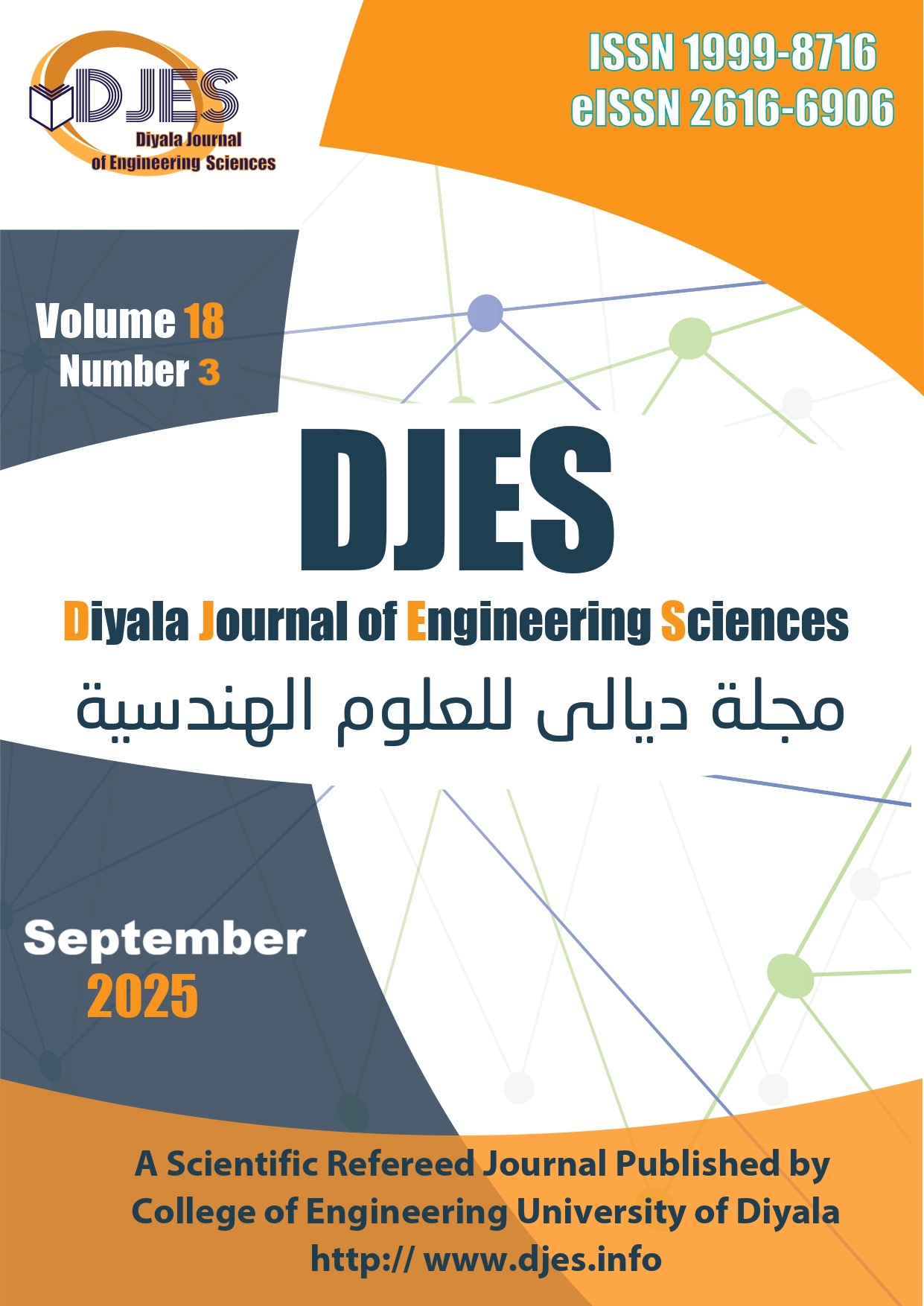A Privacy-Preserving E-Voting System using Federated Learning and CNNs for Secure Fingerprint and Biometric Verification
DOI:
https://doi.org/10.24237/djes.2025.18312Keywords:
Federated Learning, E-voting, Biometric Verification, Convolutional Neural Networks, Privacy-Preserving, Fingerprint Recognition, Gender Recognition, ID VerificationAbstract
The increasing reliance on electronic voting systems introduces challenges in securing voter data and ensuring privacy. Traditional e-voting systems are prone to cyber threats, compromising the integrity of elections, including data leakage, tampering, and spoofing attacks, as well as the problem of data centralization that increases the risk of hacking and loss of electoral integrity. To address this, we propose a secure e-voting system that uses federated learning to enhance security and privacy. The system employs multiple Convolutional Neural Networks (CNNs) including VGG16, VGG19, ResNet18, MobileNetV2, a custom CNN, and a ResNet-VGG hybrid across six distributed sites. In order to verify that only eligible and registered voters may cast ballots, the proposed system uses a three-step biometric process that includes user ID identification, fingerprint matching for high security using unique biometric data to prevent identity fraud, and gender identification as an extra layer of verification to lower the risk of identity theft. Furthermore, the system trains models locally and only transfer trained weights to avoid centralized sensitive data. When compared to the Sokoto-Coventry fingerprint dataset, it achieved high rates of 99.75% for identity recognition, 99.90% for fingerprint recognition, and 99.97% for gender recognition. These results highlight the effectiveness of the proposed system in providing a secure, privacy-preserving, and scalable solution for e-voting.
Downloads
References
[1] S. S. Chaeikar, A. Jolfaei, N. Mohammad, and P. Ostovari, “Security principles and challenges in electronic voting,” in 2021 IEEE 25th International Enterprise Distributed Object Computing Workshop (EDOCW), 2021, https://doi.org/10.1109/EDOCW52865.2021.00030.
[2] A. D. Rubin, “Security considerations for remote electronic voting,” Commun. ACM, vol. 45, no. 12, pp. 39–44, 2002, https://doi.org/10.1145/585597.585599.
[3] L. Carter and F. Bélanger, “The utilization of e‐government services: citizen trust, innovation and acceptance factors,” Inf. Syst. J., vol. 15, no. 1, pp. 5–25, 2005, https:// doi.org/10.1111/j.1365-2575.2005.00183. x.
[4] W. Ali Mahmood, J. Waleed, A. R. Abbas, H. Alaskar, M. Altulyan and A. Jaafar Hussain, "Intelligent Gesture-Enhanced Blockchain Voting: A New Era of Secure and Accessible E-Voting," in IEEE Access, vol. 12, pp. 144055-144068, 2024. doi: 10.1109/ACCESS.2024.3468338.
[5] Shamim and I. Quazi Jahan, “E-Voting Security Protocol: Analysis & Solution,” International Journal of Engineering Research and Applications, vol. 2, pp. 2938–2943, 2012.
[6] M. Sepehri, S. Cimato, and E. Damiani, “Privacy-preserving query processing by multi-party computation,” Comput. J., vol. 58, no. 10, pp. 2195–2212, 2015, https:// doi.org/10.1093/comjnl/bxu093.
[7] H. B. McMahan, E. Moore, D. Ramage, S. Hampson, and B. A. y. Arcas, “Communication-efficient learning of deep networks from decentralized data,” arXiv [cs.LG], 2016, https://doi.org/10.48550/arXiv.1602.05629.
[8] Q. Yang, Y. Liu, T. Chen, and Y. Tong, “Federated Machine Learning: Concept and Applications,” arXiv [cs.AI], 2019, https://doi.org/10.48550/arXiv.1902.04885.
[9] J. Waleed, S. Albawi, H. Q. Flayyih and A. Alkhayyat, "An Effective and Accurate CNN Model for Detecting Tomato Leaves Diseases," 2021 4th International Iraqi Conference on Engineering Technology and Their Applications (IICETA), Najaf, Iraq, 2021, pp. 33-37, doi:10.1109/IICETA51758.2021.9717816.
[10] B. S. Mahdi, M. J. Hadi, and A. R. Abbas, “Intelligent security model for password generation and estimation using hand gesture features,” Big Data Cogn. Comput., vol. 6, no. 4, p. 116, 2022, https://doi.org/10.3390/bdcc6040116.
[11] A. R. Abbas and A. R. Kareem, “Age estimation using support vector machine,” Iraqi J. Sci., pp. 1746–1756, 2018. [Online]. Available: https://www.ijs.uobaghdad.edu.iq/index.php/eijs/article/view/428.
[12] J. Waleed, et al. "An Effective Deep Learning Model to Discriminate Coronavirus Disease From Typical Pneumonia", International Journal of Service Science, Management, Engineering, and Technology (IJSSMET), vol.13, no.1, pp.1-16, 2022. http://doi.org/10.4018/IJSSMET.313175.
[13] M. J. Sheller et al., “Federated learning in medicine: facilitating multi-institutional collaborations without sharing patient data,” Sci. Rep., vol. 10, no. 1, p. 12598, 2020, https://doi.org/10.1038/s41598-020-69250-1.
[14] M. H. Or Rashid, S. Rahman, J. Satu, and A. S. Tariq, “Convolutional neural network approach for precise fingerprint recognition,” in 2021 International Conference on Computer, Communication, Chemical, Materials and Electronic Engineering (IC4ME2), 2021, https://doi.org/10.1109/IC4ME253898.2021.9768468.
[15] J. Liu, T. Han, M. Tan, B. Tang, W. Hu, and Y. Yu, “A publicly verifiable E-voting system based on biometrics,” Cryptography, vol. 7, no. 4, p. 62, 2023, https://doi.org/10.3390/cryptography7040062.
[16] H. Hamran, M. Abdullah, M. E. Naveed, and A. R. Afzal, “Design and implementation of secure electronic voting system using fingerprint biometrics,” Journal of Artificial Intelligence and Computing, vol. 1, no. 1, pp. 1–5, 2023, doi: 10.57041/jaic.v1i1.887.
[17] A. Narayanan and Q. M. Hameed Uddin, “Gender detection and classification from fingerprints using convolutional neural network,” in 2023 4th International Conference on Signal Processing and Communication (ICSPC), 2023, https://doi.org/ 10.1109/ICSPC57692.2023.10125703.
[18] D. Maiti and D. Das, “Gender and hand identification based on dactyloscopy using deep convolutional neural network,” in Lecture Notes in Networks and Systems, Singapore: Springer Nature Singapore, 2023, pp. 145–155, https://doi.org/10.1007/978-981-99-3734-9_13.
[19] Sameera et al., “Privacy-preserving in Blockchain-based Federated Learning systems,” Comput. Commun., vol. 222, pp. 38–67,2024, https://doi.org/10.1016/j.comcom.2024.04.024.
[20] C. H. Srilatha et al., “Fingerprint-based biometric smart electronic voting machine using IoT and advanced interdisciplinary approaches,” E3S Web Conference, vol. 507, p. 01037, 2024, https://doi.org/10.1051/e3sconf/202450701037
[21] K. Simonyan and A. Zisserman, “Very deep convolutional networks for large-scale image recognition,”2014, https://doi.org/10.48550/arXiv.1409.1556.
[22] L. R. Al-Khazraji, A. R. Abbas, and A. S. Jamil, “Effect of changing targeted layers of the deep dream technique using VGG-16 model,” Int. J. Onl. Eng., vol. 19, no. 03, pp. 34–47, 2023, https://doi.org/10.3991/ijoe.v19i03.37235.
[23] S. Mascarenhas and M. Agarwal, “A comparison between VGG16, VGG19 and ResNet50 architecture frameworks for Image Classification,” in 2021 International Conference on Disruptive Technologies for Multi-Disciplinary Research and Applications (CENTCON),2021,http://doi.org/10.1109/CENTCON52345.2021.968794.
[24] K. He, X. Zhang, S. Ren, and J. Sun, “Deep residual learning for image recognition,” 2015, https://doi.org/10.48550/arXiv.1512.03385.
[25] A. Ullah, H. Elahi, Z. Sun, A. Khatoon, and I. Ahmad, “Comparative analysis of AlexNet, ResNet18 and SqueezeNet with diverse modification and arduous implementation,” Arab,” J. Sci. Eng, vol. 47, no. 2, pp. 2397–2417, 2022 https://doi.org/10.1007/s13369-021-06182-6.
[26] M. Sandler, A. Howard, M. Zhu, A. Zhmoginov, and L.-C. Chen, “MobileNetV2: Inverted residuals and linear bottlenecks,” in 2018 IEEE/CVF Conference on Computer Vision and Pattern Recognition, 2018, https://doi.org/10.1109/CVPR.2018.00474.
[27] R. J. Kolaib and J. Waleed, "Crime Activity Detection in Surveillance Videos Based on Developed Deep Learning Approach," Diyala Journal of Engineering Sciences, vol. 17, no. 3, pp. 98-114, 2024. doi: 10.24237/djes.2024.17307.
[28] Y. I. Shehu, A. Ruiz-Garcia, V. Palade, and A. James, “Sokoto Coventry Fingerprint Dataset,” 2018,https://doi.org/10.48550/arXiv.1807.10609.
[29] A. Al-Saegh, A. Daood, and M. H. Ismail, “Dual Optimization of Deep CNN for Motor Imagery EEG Tasks Classification”, Diyala Journal of Engineering Sciences, vol. 17, no. 4, pp. 75-91, 2024. doi: 10.24237/djes.2024.17405.
[30] H. Mohammed Fadhil, Z. O. Dawood, and A. Al Mhdawi, “Enhancing Intrusion Detection Systems Using Metaheuristic Algorithms ”, Diyala Journal of Engineering Sciences, vol. 17, no. 3, pp. 15-31, 2024. doi: 10.24237/djes.2024.17302.
Downloads
Published
Issue
Section
License
Copyright (c) 2025 Wisam Ali Mahmood, Jumana Waleed, Ayad R. Abbas

This work is licensed under a Creative Commons Attribution 4.0 International License.












